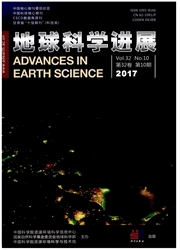

 中文摘要:
中文摘要:
钾盐是中国紧缺的重要战略资源之一,寻找大型钾盐矿床是中国矿床学界的一大难题。近几十年来世界钾盐矿床有不少新的发现,提供了丰富的实际资料,钾盐矿床的成矿理论也有相应的修正和补充。通过总结国内外钾盐矿床最新的成钾特征,归纳了钾盐矿床形成主要受控于成矿时代、构造条件、成盐的古地理条件、古气候、盆地位置和盐类物质来源几个条件。钾盐主要成矿时代为二叠纪、白垩纪、晚侏罗世、寒武纪和泥盆纪。巨厚的蒸发岩建造的形成,有赖于构造与环境气候的特殊配合。气候旋回与地壳运动的旋回性有关,即每一个大的地壳构造旋回末期,往往都出现一个成盐高峰期,钾盐矿床均出现于成盐的高峰期内。钾盐矿床同其他盐类矿床一样,也需要干旱的气候条件。由于钾盐是卤水演化的最后阶段的产物,故需要持续干旱的气候条件。但气候条件也是很复杂的,在普遍认为潮湿气候时期出现了局部的干旱气候带,干旱气候带的形成明显受地形地貌的控制,在局部干旱的气候条件下也可以形成钾盐矿。按照传统概念钾盐形成的位置应该在岩盐盆地之中,但是实际情况是比较复杂的,有的钾盐盆地完全和盐岩盆地相重合,有的在岩盐盆地一侧,甚至还有的在岩盐盆地范围之外。盐类物质来源有海源、陆源和深源。对影响钾盐矿床形成的上述几个重要条件的研究进展进行了概述,对在中国进一步找寻钾盐矿床具有重要的借鉴意义。最后,总结了3种国外大型钾盐矿床成矿模型,即陆表海盆成钾作用模式、异常蒸发成钾模式和裂谷成钾模式。3种成钾模式的关键区别在于钾盐的物质来源不同,即陆表海盆成钾作用模式中钾的来源是海水,异常蒸发成钾模式中钾的来源为非海相卤水,而裂谷成钾模式中钾的来源主要是火山活
 英文摘要:
英文摘要:
Potash salt is one of key scarce strategic resources. Searching for large scale of potash salt deposit is one big problerm which Chinese academic community faces. Many new discoveries of world potash deposit have been made in recent ten years, which provide abundant practical information and complement the potash metallo- genic theory. Through the summary of the potash forming characteristics at home and abroad, the paper studies the potash forming time, tectonic condition, paleogeographic condition, paleoclimate, basin location and salt source. Potash is mainly formed in Permian, Cretaceous, late Jurassic, Cambrian and Devonian. The combination of struc- ture and environment helps to form large scale of evaporation. The climate cycle is related with crust activity. As the other ore deposit, the formation of potash ore also needs dry climate. Potash is the product of final stage in brine evolution, and therefore, it needs persistent drought climate. However, the climate condition is very compli- cated. Drought climate belt also occurs in humid climate stage, which is controlled by geomorphology. Potash ore can also form in local drought condition. Generally, potash forms in rock salt basin. However, the actual situation is very complicated. Some potash basin is coincided with rock salt basin, some is on one side of rock salt basin; and some are even in the outside of rock salt basin. Salt materials can be from three sources : marine source, terrig- enous source and deep source. The paper gives an overview of the research status about the potash deposit forming conditions, which has great guiding significance for searching potash deposit in China. The paper also summarizes the three types of metallogenic models for potash deposit, including epicontinental metallogenic model, abnormal marine evaporation model and rift valley model. The three models are mainly different in material sources, in which the potash in epicontinental metallogenic model is from seawater; the potash in abnormal evaporation model is from n
 同期刊论文项目
同期刊论文项目
 同项目期刊论文
同项目期刊论文
 期刊信息
期刊信息
